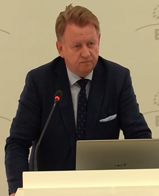Public Participation
Public Participation in Decision-making at Member State Level
Environmental information is interesting, especially if it can be used the influence a decision. This requires access to decision-making procedures, i.e. public participation. This pillar of the Aarhus Convention is implemented by Directive 2003/35/EC (the Public Participation Directive), which consists of 2 main parts. Article 2 of Directive 2003/35/EC contains provisions for a general public participation procedure. Articles 3 and 4 of Directive 2003/35/EC amend the Environmental Impact Assessment (EIA) Directive and Integrated Pollution Prevention and Control (IPPC) Directive in order to improve the public participation as part of those directives.
The following plans and programmes are subject to the public participation requirement:
- Waste management plans and prevention programmes pursuant to the Waste Framework Directive (Article 31 of the Waste Framework Directive).
- Packaging waste management plans pursuant to Article 14 of the Packaging Waste Directive 94/62/EC.
- Air quality plans for zones where the air quality exceeds the limit values pursuant to Directive 2008/50/EC.
- Programmes for vulnerable zones pursuant to Article 5(1) the Nitrates Directive 91/676/EEC.
Article 2(5) of Directive 2003/35/EC excludes all plans and programmes that fall under the Strategic Environmental Assessment (SEA) Directive as well as those subject to the public participation on the basis of the Water Framework Directive. The IPPC and EIA Directives have their own specific provisions on public participation. Provisions on public consultation can also be found in the field of genetically modified organism (GMO) legislation.
The obligation to allow for public participation applies only to natural and legal persons and, but only insofar as the national law allows for this, associations of groups of natural and legal persons (Article 2(1) of Directive 2003/35/EC). The 1st stage of public participation involves informing the public about the proposals and the possibility of participation (Article 2(2)(a) of Directive 2003/35/EC). After this, there must be the possibility for effective participation, which refers to the stage in the decision-making process when the options are still open. The central obligation according to Article 2(2)(c) of Directive 2003/35/EC is to take due account of the views of the results of the public consultation. The public must be informed of the final decision and public participation process (Article 2(2)(d) of Directive 2003/35/EC).
EIA and IPPC have similar provisions on public participation, but they have a wider scope in that they also provide for cross-border public participation and provisions on access to justice.
For the presentation on "Public participation in decision making: Steps of procedure" see:

